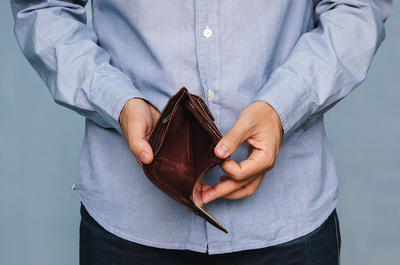
LGBT people may have fewer financial resources than their heterosexual peers.
Fewer Financial Resources
The world is a more welcoming place for members of the LGBT community today than it was a decade ago; however, even though progress has been made, there’s still work that needs to be done. “Wage inequality, workplace insecurity, and housing rights issues still cast a shadow on the ability to attain true financial security” among LGBT individuals, proposes Kent Sluyter, Chief Executive Officer of Individual Life Insurance and Prudential Advisors.
Prudential’s 2016–2017 report, The LGBT Financial Experience, delves deep into the financial state of LGBT people and reveals:
- While LGBT people are focused on savings and retirement, they still consider themselves to be “spenders” as compared to the general population. They’re more likely to spend more and save less than their straight counterparts.
- Members of the LGBT community are less likely to have started saving for retirement, to have life insurance, and to have estate plans. They’re also more likely to be uninsured than non-LGBT people and less likely to have a personal doctor, according to data from Gallup. Given the fact that many for-profit healthcare facilities don’t cover addiction treatment, LGBT people may be at a disadvantage when it comes to getting the help they need.
- Gender identity and sexual orientation have been linked to a pay gap. “While males overall tend to make more money than females, gay men and lesbian women each report making less, on average, than their heterosexual counterparts,” reveals the report. According to research from the Williams Institute, gay and transgender employees may make as much as 32 percent less than similarly qualified heterosexuals. As a result, many LGBT people also report feeling financial stress.
- LGBT people are more likely to “feel insecure in their financial knowledge” than their heterosexual peers. They also have more concerns about employee protections and lack of survivor benefits.
When combined with other barriers to care, such as negative experiences with the healthcare system, limited support systems, and lack of knowledge by providers in caring for them, limited access due to financial concerns among LGBT individuals can add up to a major impediment.
Overcoming the Obstacles
There are ways to make the situation better. Proposes the National LGBT Health Education Center’s report, Providing Inclusive Services and Care for LGBT People, “By learning to care for LGBT people with sensitivity and understanding, health care workers can help LGBT people avoid the ‘double whammy’ of experiencing these health problems in their daily lives, and then being discouraged from seeking the care they need.”

While making the call can be hard, knowing that help is waiting can make all the difference.
Additionally, help is available from the Substance Abuse and Mental Health Service Administration (SAMHSA). Specifically, SAMHSA’s National Hotline offers a free information service that also provides referrals to local treatment facilities, support groups, and community-based organizations. The takeaway? While LGBT people may face unique barriers to recovery, they’re not without resources—or hope.
Lastly, keep in mind that substance abuse rehab programs that acknowledge LGBT sensitivities about everything from money to family support and incorporate them into their treatment designs are inherently more accessible than programs that do not.
We’re Here to Help
Contact us at Harris House today to learn more about our targeted programs for the LGBT community.







